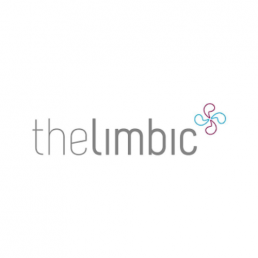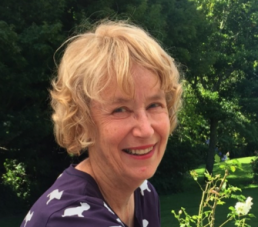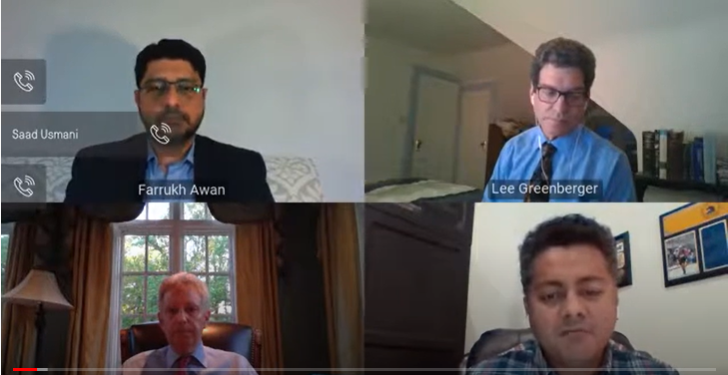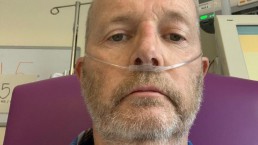'CLL flares’ reported after stopping ibrutinib
'CLL flares’ reported after stopping ibrutinib
Patients with ibrutinib-resistant CLL should remain on the BTK inhibitor until immediately before starting their next therapy, Australian haematologists have advised. In a Commentary article in Leukemia & Lymphoma, Dr Chloe Tang and Associate Professor Constantine Tam wrote that ‘CLL flares’ – accelerated CLL progression after ceasing ibrutinib – can be difficult to distinguish from …
Durable disease control achieved with BTKi salvage therapy in patients with CLL
Durable disease control achieved with BTKi salvage therapy in patients with CLL
Patients with chronic lymphocytic leukaemia (CLL) who progress on venetoclax can achieve durable disease control with Bruton tyrosine kinase inhibitor (BTKi) salvage therapy, new Australian research reveals. The study included 23 patients with refractory/relapsed CLL who received a BTKi (ibrutinib [n=21], zanubrutinib [n=2]) after ceasing the BCL2 inhibitor venetoclax due to progressive disease. After initiating …
To continue reading click here.
A current overview of medications in the treatment of CLL in New Zealand
A current overview of medications in the treatment of CLL in New Zealand
A talk presented to the CLL Advocates NZ Board of Trustees on 7 May 2020 by Dr Gillian Corbett MBChB, FRACPath, MRCP, FRACP, Trustee, CLL Advocates NZ https://clladvocates.nz/about-us/trustees/
Not all CLL patients need treatment. Treatment is offered for progressive disease, increasing lymphadenopathy, anaemia, and/or low platelets, as well as rapidly increasing lymphocyte count.
Patients with mutated heavy genes (about 55%) generally carry a better prognosis than those with unmutated heavy genes. This testing is unfortunately unavailable in NZ.
First line treatment
In New Zealand, FCR (fludarabine, cyclophosphamide, rituximab) is standard treatment for younger patients with CLL, up to around 70-75 years. Fludarabine and cyclophosphamide are generally given orally, once per month for up to 6 courses, and rituximab is given as an intravenous infusion once a month. This treatment is very successful for patients with mutated heavy chain genes, and some may potentially be cured. However those with unmutated heavy chain genes do not respond so well and frequently relapse early. A study has shown that such patients respond well to ibrutinib with a better outcome than FCR. However ibrutinib is not funded to treat CLL in New Zealand.
For older patients (70-85 years) the funded first line treatment is bendamustine and rituximab. Each is given by infusion once per month for up to 6 months. This treatment has been shown to be not so effective for younger patients, for whom FCR is preferred, but is better tolerated by older patients
For older patients or those unfit for bendamustine and rituximab, chlorambucil and obinutuzumab is the funded treatment. Obinutuzumab is a more potent antibody than rituximab and has been shown to be more effective in combination with chlorambucil in these patients.
Venetoclax is funded as first line treatment for patients with del17p chromosomal change. These patients do not generally respond well to the other funded treatments. It targets BCL2 which results in an increased rate of CLL cell death. It is given orally and is generally well tolerated but in some patients with bulky disease it may cause tumour cell lysis which can result in kidney damage. Such patients may require hospitalisation for intravenous fluid and supportive care.
Second line treatment
Patients who relapse within 3 years of previous treatment are eligible for venetoclax and rituximab. The venetoclax is to be used for up to 24 months. It is given orally.
Research
There are studies overseas of combining ibrutinib and venetoclax treatment with a view to achieving negative minimal residual disease and possibly cure of CLL. The results of these studies are awaited.
Ibrutinib is a Bruton’s tyrosine kinase (BTK) inhibitor which interferes with CLL cell growth. It is effective in the majority of de novo and relapsed patients with CLL. It is not known to cure CLL. It is generally well tolerated. Other BTK inhibitors that are more targeted are being trialled eg acalabrutinib and zanubrutinib. Tauranga and Waikato Hospitals are part of an international clinical trial comparing ibrutinib to zanubrutinib in relapsed CLL.
Other areas of research are in the development of immune therapies eg CAR-T cells to target CLL cells.
Study Findings Support Long-Term Efficacy and Safety of Acalabrutinib in R/R CLL
Study Findings Support Long-Term Efficacy and Safety of Acalabrutinib in R/R CLL
Long-term follow-up of a phase 1/2 study demonstrated durable efficacy and safety of acalabrutinib monotherapy in patients with relapsed/refractory chronic lymphocytic leukemia/small lymphocytic leukemia (CLL/SLL), according to results published in Blood.1
Acalabrutinib, an oral selective Bruton tyrosine kinase (BTK) inhibitor, was approved in November 2019 by the US Food and Drug Administration (FDA) at a dose of 100 mg twice daily for the treatment of adult patients with CLL/SLL.2
This analysis included updated results from the initial phase 1/2 study of acalabrutinib in an expanded cohort of 134 adult patients with relapsed/refractory CLL/SLL with a median age of 66 years (ClinicalTrial.gov Identifier: NCT02029443) followed for a median of 41 months. While patients initially received acalabrutinib at a dose of either 200 mg once daily or 100 mg twice daily, only the latter dose of acalabrutinib was administered following a study amendment in May 2015 based on results of pharmacodynamics studies.
At data cutoff, more than half of study patients were still receiving acalabrutinib, with 21% of patients discontinuing acalabrutinib therapy due to progressive disease.
Overall response rate (ORR), including patients achieving a complete response, a partial response. or a partial response with lymphocytosis (PRL) was 94%, with PRL as best response in 6% of patients. Of note, ORR was 90% or higher in the subgroups of patients with disease characterized by del(17)(p13.1), del(11)(q22.3), unmutated immunoglobulin heavy variable (IGHV) genes, and complex karyotype characterized by 3 or more abnormalities. In addition, median duration of response (DOR) was not reached, with 45-month DOR estimated at 63% for those with PRL or better.
Median progression-free survival (PFS) for the overall study population was not reached at the time of the analysis, with 45-month PFS estimated at 62%. In the subgroups of patients with disease characterized by del(17)(p13.1), unmutated/mutated IGHV, complex karyotype, and del(11)(q22.3), median PFS was 36 months, not reached, 33 months, and not reached, respectively.
Regarding safety, grade 3 or higher adverse events occurred in 66% of patients, including neutropenia, pneumonia, hypertension, anemia, and diarrhea in 14%, 11%, 7%, 7%, and 5% of patients, respectively.
Eleven percent of patients discontinued acalabrutinib as a result of one or more adverse events. Adverse event-related death was reported in 7.5% of patients, with half of these attributed to pneumonia.
Atrial fibrillation of any grade occurred in 7% patients, with approximately 3% experiencing atrial fibrillation of at least grade 3. Major bleeding classified as grade 3 or higher, serious, or involving the CNS, was reported in 5% percent of patients.
“Notably, acalabrutinib with follow-up beyond 4 years has shown a decreased frequency of [adverse events] over time and no long-term safety issues to date,” the study authors noted.
In their concluding remarks, they further commented that “this updated and expanded study confirms the efficacy, durability of response, and long-term safety of acalabrutinib, justifying its further investigation in previously untreated and treated patients with CLL/SLL.”
References
- Byrd JC, Wierda WG, Schuh A, et al. Acalabrutinib monotherapy in patients with relapsed/refractory chronic lymphocytic leukemia: updated phase 2 results. Blood. 2020;135:1204-1213.
- Acalabrutinib (Calquence®) [package insert]. 2019. Wilmington, DE: AstraZeneca Pharmaceuticals LP; 2019.
Originally published on Cancer Therapy Advisor
Coronavirus: Separating Fact From Fiction for CLL Patients
Coronavirus: Separating Fact From Fiction for CLL Patients
“We’re learning every day, and we’re modifying and adjusting based on what we learn,” says Dr. William Wierda, from The University of Houston MD Anderson Cancer Center, as new information continues to come to light on the novel coronavirus.
Can cancer medicines be used to treat COVID-19? Does the effect of the virus vary by CLL subtype? Is ibrutinib (Imbruvica) being mixed with Coca-Cola? Watch to hear expert perspectives on questions like these and more.
With much misinformation circulating online, Dr. Wierda and Dr. Kerry Rogers, from The James Comprehensive Cancer Center at OSU, joined Patient Power to help chronic lymphocytic leukemia patients separate fact from fiction and explain how care is being modified during the pandemic.
This program is sponsored by Pharmacyclics and Janssen. These organizations have no editorial control, and Patient Power is solely responsible for program content.
Click the image to view this video.
Originally published on Patient Power
COVID-19's Impact on How Patients with CLL, Myeloma Have Received Treatment
COVID-19's Impact on How Patients with CLL, Myeloma Have Received Treatment
CURE® recently invited patients, survivors, caregivers, advocates and health care professionals to attend its first-ever live webinar, “Hear from the Experts: COVID-19 & Cancer Care for Patients.”
Sponsored by Janssen and Pharmacyclics, the webinar was designed to provide those affected by chronic lymphocytic leukemia (CLL) and myeloma with information and updates as it pertained to the current landscape of cancer care during the uncertain times of the new coronavirus (COVID-19).
Dr. Saad Usmani, chief of the Plasma Disorders Program and director of clinical research in hematologic malignancies at the Levine Cancer Institute served as the moderator for the webinar. Panelists included:
- Dr. Zainab Shahid, medical director of bone marrow transplant infectious diseases at the Levine Cancer Institute
- Dr. Farukh Awan, director of the Lymphoid Malignancies Program at the Harold C. Simmons Comprehensive Cancer Center at UT-Southwest
- Dr. Ian Flinn, director of the Lymphoma Research Program at Sarah Cannon Research Institute
- Dr. Lee Greenberger, chief scientific officer at the Leukemia and Lymphoma Society
In the first part of this series, Dr. Farukh Awan addresses how the pandemic has affected his practice, as well as how it has impacted how patients with CLL and myeloma have received care.
Awan: We’re all learning. This is something that none of us have experienced before, so we’re learning more and more about the virus with every passing day. There’s more data coming out. There’s a lot of new clinical trials happening, so everything is happening at the same time we are all trying to do the best we can to decrease the spread of this so we can better manage our patients who do get infected and that would not overwhelm the system.
In line with that, every institution has instituted a policy that suits their needs. Fortunately, in Dallas we started with social distancing early and I think we were able to keep the numbers fairly manageable. And yet, we still had to make a lot of changes to the way we practice.
In terms of outpatient management, we have limited the number of visitors that come in with the patient. We try to keep them outside of the clinic area. We also have tried to make the most of our electronic visits so that the least number of patients get exposed to the staff, and vice versa. We have also started utilizing local labs, which are a lot of times not as busy as the oncology clinics and cancer centers. Those labs then give us the results from the blood work that we need. I think we’ve utilized all of these approaches on the outpatient side. We’ve also been fortunate that we have a service for drive-through testing for patients who have active symptoms. We are trying to get them through the drive-through testing and if they are positive, then they’re asked to quarantine at home.
For those who do get really sick and need to go to the hospital, the ER has a system where everybody gets quarantined on arrival. They get tested in a timely manner with a rapid test for their COVID-19 and if they are positive, they are then sent to a specific isolation floor meant for those patients. There are mechanisms in place, both on the outpatient and inpatient side, which have tried to minimize exposure to patients, family members, and staff at the same time.
As far as for patients with chronic lymphocytic leukemia (CLL) who are concerned, a lot of our patients can afford to wait a little bit to start their new treatment. For patients who are not actively getting treated, we do plan on delaying their treatment until at least we have some idea of better treatment modalities and if their symptoms can be managed by other approaches. For those who are on active treatment, we are trying to continue those treatments while trying to minimize their return visits and we’re trying to do that electronically as much as possible, either via telephone calls or through a video visit. Either option is being utilized so that patients can limit their back and forth to the clinic.
We know that our patients with CLL are especially at a high risk of getting infections. Infection-related complications are one of the leading problems in our patients. We expect that our patients would be at an extremely higher risk and that’s why we are also advising that they socially distance themselves from any known patient or persons who might have the virus. We are now also learning that there is a fairly large group of patients, or people in the community, who would have asymptomatic disease and they can potentially spread the disease to a lot of other people without even knowing that they have the virus, and I think that’s very scary for our patients since they are immunocompromised at baseline, even without treatment.
It’s a unique challenge. We are recommending that all our patients with CLL practice social distancing, minimize exposure, and even if they don’t have to go out for groceries they shouldn’t. I think if we can do that over the next few months, hopefully, we can right this and hopefully we will get our patients through it without having any serious complications.
On the other hand, some patients with lymphoma can wait to start treatment, some of them cannot. In some aggressive lymphomas, the treatments need to be started right away. For those patients who need to start treatment right away we are following them very closely for any symptoms. If they exhibit any symptoms, like fevers or a cough or any upper or lower respiratory tract symptoms, we are testing them before we give them any chemotherapy. If somebody is positive for the virus, we are not using chemotherapy for those patients and we are trying to delay chemotherapy as much as possible.
For patients already on treatment and need to be admitted to the hospital we are screening them with a test 48 to 72 hours prior to their admission to the hospital, and once they’re negative, they can then start their treatments. We’re trying to use all these resources that are available to us to try to minimize the risk, again, to the staff and to patients and to prevent any complications that might happen in the future.
Finally, I’d like to make a point regarding stem cell transplants and CAR T. These can be potentially curative options for our patients. We also realize that a lot of our patients will get extremely sick during that process. So, we have multiple challenges with regards specifically to stem cell transplants and CAR T. We’ve also learned that the Red Cross and blood banks are being stretched and that their resources are limited. The number of donors is limited. Since there aren’t a lot of donors like we normally would have, getting access to blood products can be a challenge for our transplant patients, especially if they need blood transfusions and platelets.
We’re trying to very specifically look at all the factors for every patient who is undergoing an autologous transplant, or a CAR T cell treatment and we are trying to select the patient who absolutely needs to proceed with it. We are taking that patient to transplant and are employing a multitude of tests at various time points and making sure there are no visitors during their hospital stay, and as much as possible we are ideally using electronic visits for follow-up to minimize exposure.
Have we done transplants in the last few months? Absolutely. We’ve also done CAR Ts and we have successfully and safely gotten patients through it, but it’s challenging. It can be done but we have to be extremely careful that we minimize exposure to our patients and hopefully we can all get through this.
Originally published on Cure
How COVID-19 Has Impacted Clinical Trials for Chronic Lymphocytic Leukemia
How COVID-19 Has Impacted Clinical Trials for Chronic Lymphocytic Leukemia
Many patients with chronic lymphocytic leukemia (CLL) rely on the outcomes of clinical trials that examine new ways to treat the disease. But with the new coronavirus (COVID-19) pandemic changing the way health care is provided around the country, so too is participation in these trials, according to Dr. Brian Koffman, the co-founder, executive vice president and chief medical officer of the CLL Society.
CURE® recently spoke with Koffman about how clinical trial participation has become more flexible over the course of the pandemic in an effort to keep immunocompromised individuals like those with CLL safe, by utilizing things like telemedicine and localized care to avoid exposure to the virus.
Originally published on Cure
New Research Shows Real-World Track Record of Common CLL Therapies
New Research Shows Real-World Track Record of Common CLL Therapies
New Research Shows Real-World Track Record of Common CLL Therapies
A new study offers real-world insights into the results of several common and emerging therapies for chronic lymphocytic leukemia (CLL), and suggests differences in how the drugs perform in community settings versus clinical trial settings.
The study, based on the Connect CLL registry, was published this month in Blood Advances. The registry enrolled 1494 patients with CLL who sought treatment at 199 healthcare centers in the US between the years 2010 and 2014. Most of the centers were community-based. Patients were grouped by line of therapy upon enrollment in the study, and the median follow-up was 46.6 months.
The most common treatments in the study were bendamustine and rituximab (BR), with just over one-third of patients receiving that therapy. Next was fludarabine, cyclophosphamide, and rituximab (FCR), which was given to 21.4% of patients. Rituximab monotherapy was prescribed in 18.5% of cases.
Median overall survival (OS) was not achieved in the first line of therapy; median OS was 63 months in the second line of therapy, and 38 months in the third or higher line of therapy.
In the first line of therapy, median event-free survival (EFS) was 59 months for patients on BR and 55 months in FCR. In a multivariate analysis, BR or FCR in the first line of therapy outperformed the other therapies in both OS and EFS. Anthony Mato, MD, of Memorial Sloan Kettering Cancer Center, and colleagues noted that ibrutinib also had a positive impact, according to the data.
“As expected, EFS and OS became shorter and response rates decreased as LOT increased,” Mato and colleagues wrote. “In addition, ibrutinib therapy improved OS in all R/R [relapsed or refractory] patients regardless of the LOT in which it was received (LOT2, LOT3, or LOT≥4), even though it was approved by the FDA after the start of the Registry.”
The timing of the study period also meant that no patients in the study received ibrutinib in a frontline setting.
Pneumonia (11.6%) and febrile neutropenia (6.2%) were the most common adverse events.
The investigators used the data to identify a new category of patients at particularly high risk of death within 2 years of enrollment. The group was defined by a number of characteristics, including site of enrollment, race, age, insurance coverage, income, enrollment regimen, Charlson Comorbidity Index score, Eastern Cooperative Oncology Group Performance Status score at enrollment.
The analysis differed from some clinical trials in that it did not show a significant advantage for FCR over BR. The findings suggest that FCR’s advantages may not translate into community practice, Mato and colleagues said, adding that it might be due to less-rigorous use of the therapy in a real-world setting.
Though the treatment landscape evolved over the course of the study (and continues to evolve), the authors say the study has meaningful insights for clinicians as they make treatment recommendations.
“Receiving novel agents in LOT2 improved outcomes in patients who received previous CIT [chemoimmunotherapy], supporting the inclusion of ibrutinib, idelalisib, duvelisib, and venetoclax in the treatment paradigm for patients with R/R CLL,” they wrote. “However, additional randomized clinical trials and real-world data are needed to establish the role of non-CIT regimens in the treatment of patients with R/R CLL.”
Originally published on AJMC
CLLANZ calls for home-based treatment for CLL patients during COVID pandemic
CLLANZ calls for home-based treatment for CLL patients during COVID pandemic
Last week CLL Advocates New Zealand wrote to Pharmac requesting them to provide temporary access to ibrutininb (taken in tablet form at home) for del17p and RR patients, and for newly diagnosed fit and unfit patients.
Read the letter below or download the letter here.
—
Dear Peter Murray, Deputy Medical Director
Thanks for your email clarifying the nature of changes Pharmac has made under Special Authority with respect to the management of cancer medicines, in light of the current COVID-19 crisis.
You have asked if I have any ideas on this issue that I would like to put forward for consideration and indeed I do. They concern risks posed by aspects of the current treatment of patients with CLL, as follows.
- A fellow Trustee of CLL Advocates NZ (CLLANZ), haematologist Gillian Corbett, has raised serious concern about the risks posed to patients in the administration of the current funded standard-of-care treatment for patients with del17p and relapsed refractory CLL. She has a patient starting treatment this week who had to go across town for urgent lab testing twice in one day, and again the following morning for tumour lysis syndrome (TLS) management. She noted that IV hydration needs to be considered in these patients, and that her patient will likely need to have more urgent blood tests during the coming week. She will need to have the procedure repeated next week. Gillian is very concerned about patients like this one having to put themselves at risk by going to the labs where there is likely to be a long wait, which in their immune-suppressed state would increase their risk of infection, including COVID-19.
For this reason we would like to propose that a change to CLL treatment be made under Special Authority to enable ibrutinib, which is taken in tablet form at home, to be funded temporarily for del17p and relapsed refractory CLL patients. In addition to being a home-based treatment, ibrutininb requires very little monitoring, infrequent blood tests and infrequent attendance at hospital (outpatients).
- We also propose that the Special Authority enables newly diagnosed fit and unfit patients to access ibrutinib, to avoid the need for chemotherapy or a delay in initial treatment. Again this would be a temporary SA to be in place until such time as patients can safely undergo in-hospital care.
- Finally we propose that the Special Authority for ibrutininb should also apply to treatment for CLL patients who are having intravenous therapy in a hospital setting, such as rituximab or obinutuzumab, which is given by infusion and requires, particularly initially, prolonged attendance at the chemotherapy department which is highly undesirable at this time of the COVID-19 epidemic.
As you would know, patients with CLL are immuno-compromised, and most are in the most at-risk age group, so we believe for all these reasons Pharmac should move quickly to make these changes.
I don’t have an accurate understanding of the numbers of patients this would involve, and I’m currently canvasing CLLANZ subscribers for further input on this issue. But I understand there has been a significant drop in people presenting with CLL, no doubt due to the general pattern of people avoiding going to the doctor. The same may be true of RR patients. I understand that HSANZ may be looking at the likely number of patients who would benefit from these changes, but that the numbers involved are likely to be very small and the costs therefore low.
It seems to me, at a time when so much effort is going in to saving lives, implementing this proposal would be a most worthwhile contribution from Pharmac.
I’d be very happy to discuss this with you or provide any further information you may require, and look forward to hearing back from you on this request.
Kind regards
Neil Graham FRACP, FRCP
Executive Director
CLL Advocates NZ
How it feels to be in intensive care with COVID-19 - a survivor with CLL
Coronavirus: This is how it feels to be in intensive care with COVID-19 - a survivor's graphic story
Robin Bowler, a lottery and gaming consultant, feared he’d never see his kids again after contracting coronavirus and ending up in intensive care – but a voice in his head somehow got him through.
This is a story of hope, his story – a survivor’s story:
If you were to write down the classic set of conditions that a single person may have, in which COVID-19 could thrive, you would probably end up with a profile that looked remarkably like me.
I am 58, I have asthma, I have one of those much-mentioned “underlying health conditions” – namely chronic lymphocytic leukaemia (CLL) – I am blood group A (reportedly more susceptible to the more aggressive form of coronavirus, with a high proportional death rate), and until recently, drank more than I should.
On the plus side, I happen to have a good level of underlying fitness and spend a lot of time outdoors.
So that’s me. Well, almost.
I returned from Italy on 7 March and first began to feel some slight chestiness during the evening of Monday 9th. Following a call with 111 I was recommended for a COVID-19 test, which was done on the 13th and I received confirmation from Public Health England by telephone the following Tuesday 17 March.
In the meantime my previously mild condition had turned for the worse into flu-like symptoms, and I could feel an infection growing in my chest.
By the Thursday night I was having serious problems breathing. So at 5am on Friday 20 March I called 111 again and was hospitalised that morning in an isolation room in the Lulworth ward of Dorset County Hospital.
Incredibly, at this time I did not feel particularly frightened, although the enormity of my decision to go to Italy was dawning on me – as was the realisation that if this got really serious, I was on my own.
There would be no family to visit, no contact with NHS staff other than that which was essential, an intercom to speak to front-line staff safely. Just me and the four walls of my room and its contents.
By Sunday 22 March it was clear that the committed care I was receiving from the doctors and nursing staff on Lulworth ward was simply not working.
A second chest X-ray revealed that what had been originally described to me as a “pneumonia” had worsened, my temperature spikes were climbing dangerously close to the 40C mark on multiple occasions, and I was weakening by the hour.
At this time, what was really bothering me was the fact that there had been a suggestion that they would send me home within a day, and I knew that I would not cope without the specialist care available within the hospital.
My concern levels rose to full anxiety and therefore late that afternoon I asked to speak with a doctor and, during a dialogue in which I became very emotional, he calmly reassured me that there was no way I would be sent home against my wishes, and that they would not consider discharge unless they were sure I was safe.
Shortly afterwards, I was visited by a senior consultant who I believe introduced himself as head of critical care at DCH.
He informed me that, having reviewed my situation, the decision had been taken to move me to intensive care as a precautionary measure, warning me in no uncertain terms that this was going to be a long haul.
He then fixed me with a hard look and added: “You may not survive this.”
I responded (equally calmly, I think): “I’ll do what I have to do.”
But inside, I could feel my confidence crumbling, my fear rising to hitherto unknown levels, and my mind starting to run amok with self-recrimination, longing to be with my (adult) children Natasha (Tash) and Luke, and a new sense that I had moved from a virus into a life-threatening situation which my combination of “underlying health conditions” just may not be able to cope with.
Within less than half an hour I was in intensive care, isolated in a room that looked like it was normally the area where staff monitored patients from. I had never felt so alone in all my life.
By midnight, I was busily convincing myself that I could well be dying and it was all my own fault. The thought of never seeing Tash or Luke again was simply unbearable, but in my mind and in fact, this was a realistic scenario that now existed.
I was being monitored by a team led by a senior consultant anaesthetist, who was asking me if I thought I could continue with the oxygen supply through my nose as a preferable alternative to full anaesthesia, intubation and being placed on a ventilator for an indefinite period of time.
Going onto a ventilator meant replacing my lungs with a mechanical breathing apparatus while disabling all my normal involuntary muscular activity involved with breathing.
After an hour I realised two things: firstly that my mental capacity to make what amounted to life and death decisions was by now seriously impaired and that I was incapable of making good decisions; and secondly that I was haunted by the fact that the second X-ray had been worse than the first, and so I was convinced that the current oxygen treatment was similarly not up to the job.
By 2am the decision was taken to “put me to sleep” and in a strange way I welcomed the ability to surrender all decision-making to these cool-headed, professional experts who knew much better than I did the risks I faced and trade-offs that were involved.
The process of being “put to sleep” was terrifying.
I was surrounded by medical staff, each with their own responsibility in the process, and all calmly and clearly directed by the senior consultant anaesthetist, who was pressing a face mask down on to my face with a force that made me feel that I could no longer breathe, while verbally reassuring me I was safe and would be taken very good care of.
I thought at the time that this could be the last I see of this life, and at the suggestion of the anaesthetist, thought of Tash and Luke for all I was worth, after which I remember nothing more of that night.
As it turned out, I was on the ventilator for approximately 36 hours during which time I remember nothing, but during which time I was kept alive by the skill of the medical teams and their sophisticated machinery.
I was brought out of the anaesthetic late afternoon on Tuesday 24 March and extubated (taken off the ventilator), and I can remember waking up, seeing blue sky through a window, and thinking “I’m still alive”. I was in the high-dependency unit by this time, and just the presence of natural daylight had the most profoundly positive effect upon me.
My immediate thought was to get a message to Tash and Luke that I was conscious again and I made that request (almost certainly in much more garbled form than I credited myself with at the time) which was duly granted.
The other feeling I had immediately was that I felt less exhausted than I had been that Sunday night, and much more ready for the prolonged fight ahead.
I was on oxygen support for the rest of Tuesday 24th, overnight and into Wednesday 25 March.
By this time I was coughing up thick globules of blood and sputum which had accumulated in my bronchus as a result of the intubation.
This was a serious problem, because every time I coughed this horrible stuff up, it made me vomit as well, which was thoroughly interruptive of the oxygen supply which was so essential to my survival at this point; and for the medical staff because it exposed them to more pure COVID-19 infectious material.
To give an idea of how sick I was at this time, one indicator called CRP (C-reactive Protein) showed that my reading was 340, where a non-infected person’s score should be minus 2.
My temperature was continuing to spike around the 40C mark (the point at which multiple organ failure can begin to set in), my blood saturation levels were poor, my blood pressure was “through the roof” (quote, unquote), and just about every other data point was out of whack.
Despite 36 hours on the ventilator, the virus was rampant within my body, particularly my lungs, and it was highly questionable whether I would make it through or not, with all my in-built disadvantages.
During the afternoon of Wednesday 25 March the team of consultants and doctors who were making collaborative decisions every hour made the decision to place me on CPAP support (continuous positive airway pressure) for however long may be necessary.
This involved a very tight-fitting face mask, through which a constant stream of pure oxygen is pumped directly into the lungs – in my case starting at 55 litres per hour.
I had two main concerns at this point: first, to keep breathing, and second, to try to suppress the coughing up of blood and sputum as I had no way of expelling it – the doctors told me I had to swallow it.
This was appalling to me, so we hit upon a compromise where I could use a thin suction tube to slide inside the CPAP mask without interrupting the flow of oxygen. This was more difficult and less practical than it sounds, and I soon found myself forcing myself to swallow the foul stuff, as I had been directed to. I was reminded of my defiant response “I’ll do what I have to do”.
Once the CPAP was started, I was on all sorts of medication. I had multiple cannulas in both arms, one in an artery, and one in my neck which allowed fluids to be poured down the back of my throat into my stomach – the water was okay, but the potassium was horrible.
But one of the medications was to reduce my level of anxiety, and so for the next 48 hours I became quite hallucinogenic as my mind was eased away from the drama of my situation, and so it started to float freely and at times bizarrely in all manner of directions.
During this 48-hour period, I found myself conversing with unknown others in a range of different accents from around the United Kingdom. Broad Scots, Northern Irish, Welsh, Geordie, Scouse, Cockney, Cornish – it was like taking a virtual tour of the UK and chatting with very amenable strangers who were full of good advice and encouragement.
And at times I would slowly descend into a sunny glade where people were relaxing, and as I got close enough to them to begin to discern their features, they vanished as quickly as they had appeared.
Other times I was floating in a circular motion inside a large natural bowl of thick green vegetation, but try as I might, I could never see the rim of the bowl and the sky above.
And all this time, the constant refrain of WHOOSH, HISS, WHOOSH, HISS, WHOOSH, HISS, dominating the weird version of consciousness that I found myself in. And a clear voice in my head then reminded me that I was fighting for my life.
It said that I was in the Staying Alive Factory, and that if I wanted to survive, I needed to stay on this noisy, uncomfortable, frightening production line; and that alternatively, if I fell off the production line, I would not make it through. So that was it.
Then the voice reminded me that I had a lot of explaining to do to Tash and Luke, and so I resolved there and then to remain on the production line – “I’ll do what I have to do”.
After approximately 48 hours on the CPAP, the same head of critical care came and asked how my breathing was.
The anti-anxiety medication must have been reduced or stopped by this time, because I clearly remember the conversation.
“Mmmch bttr,” came my reply.
“Sorry, did you say your breathing feels better?” repeated the doctor.
“Much better,” I forced out through the oxygen flow, the tight-fitting CPAP mask, and my by now completely dry mouth, throat and tongue.
I also felt instinctively that the industrial strength antibiotics they had been pumping through my body for days had finally got on top of the vicious bacterial infection in my lungs.
I had stayed on the production line, and I suddenly knew I could get past this. I could breathe to a depth that felt like it was self-sustaining (not actually quite the case at the time), and during the last few hours on the CPAP, I began to communicate by writing short notes on a clipboard given to me by one of the doctors.
One of the first notes I wrote was the question: when can I eat and drink something?
Within what seemed like a couple of hours, the CPAP was removed and replaced with a much gentler oxygen supply through my nose.
The instant calm that descended with the removal of the WHOOSH, HISS tyranny made me think I had moved from the main production line of the Staying Alive Factory to the body shop where, instead of destroying bad things and building back up good things, the focus moved to refined monitoring of what my body was able to do for itself again.
It was a beautiful day outside, that I could see from my bed. And it was a beautiful day inside my head, as I contemplated that I maybe would be seeing Tash and Luke again, and that my time had not yet come.
The rest, as they say, is history.
I was moved to Moreton ward, a convalescence ward where I was weaned off the oxygen supplies, given regular meals, and the recovery physio began. I was declared medically fit for discharge on Wednesday 1 April (an auspicious day if ever there was one), and I was reminded what a fool I’d been to play fast and loose with my health just to go on a skiing holiday. A mistake I will never make again.
Of course, there is no such thing as the Staying Alive Factory, which was an invention of my befuddled mind at a time of extreme health crisis.
What there is is the dedicated expertise, courage and commitment of the consultants, doctors, nurses, physios, Ancillary staff, and undoubtedly many, many others, of the NHS who collectively saved my life.
It may feel like a factory when you are undergoing such intensive care, but the key word here is care. It is to that care that I owe my life, and I will be forever grateful.
Originally published on Sky News











